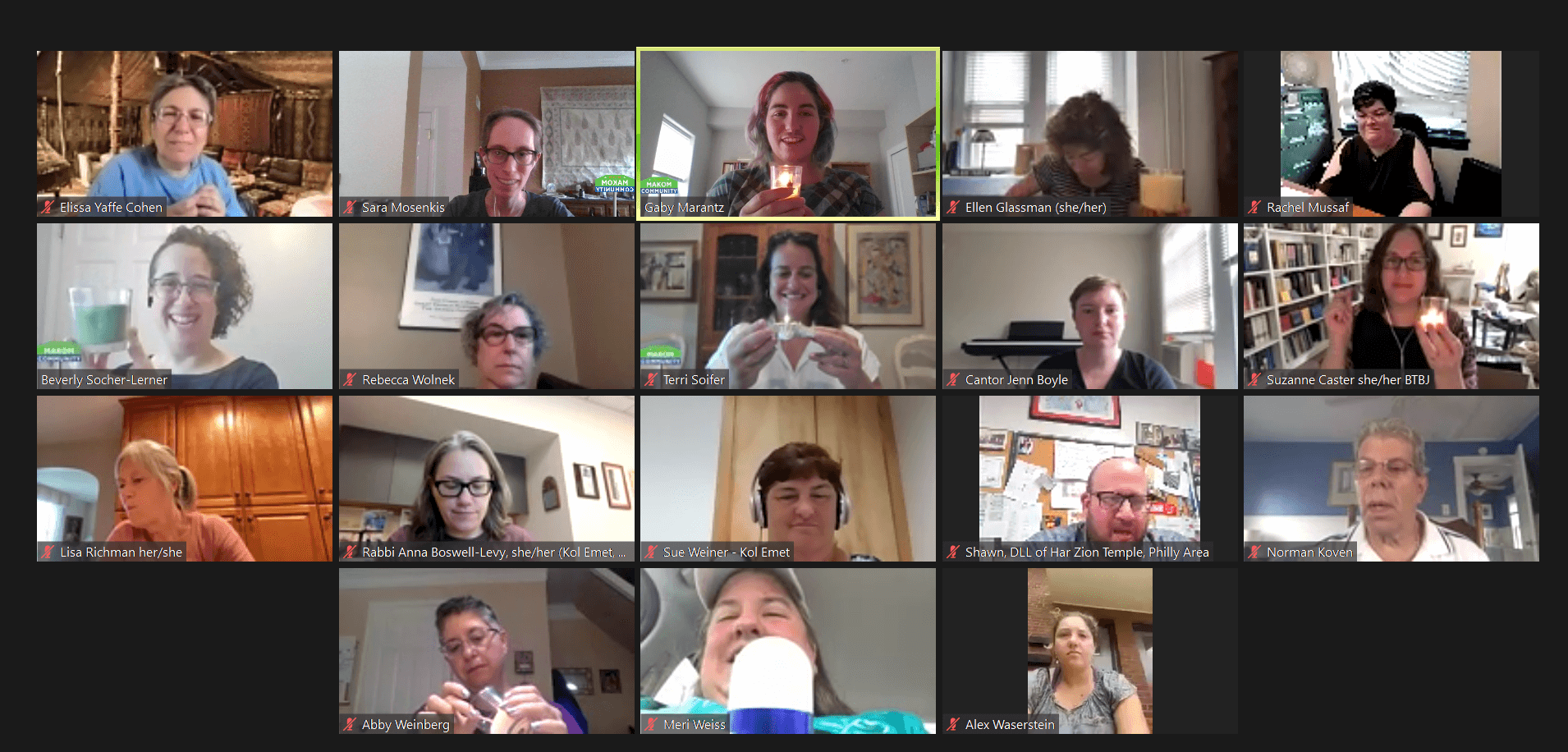
Over the last few years, teaching has demanded lots of creativity and flexibility from educators. Participants in our recent Jewish Placemaking Accelerators have bounced around to different classrooms inside their respective synagogues, outside their respective synagogues, and online. We started our December seminar together by brainstorming some challenges and opportunities presented by four different learning spaces: indoors, outdoors, shared, and online.
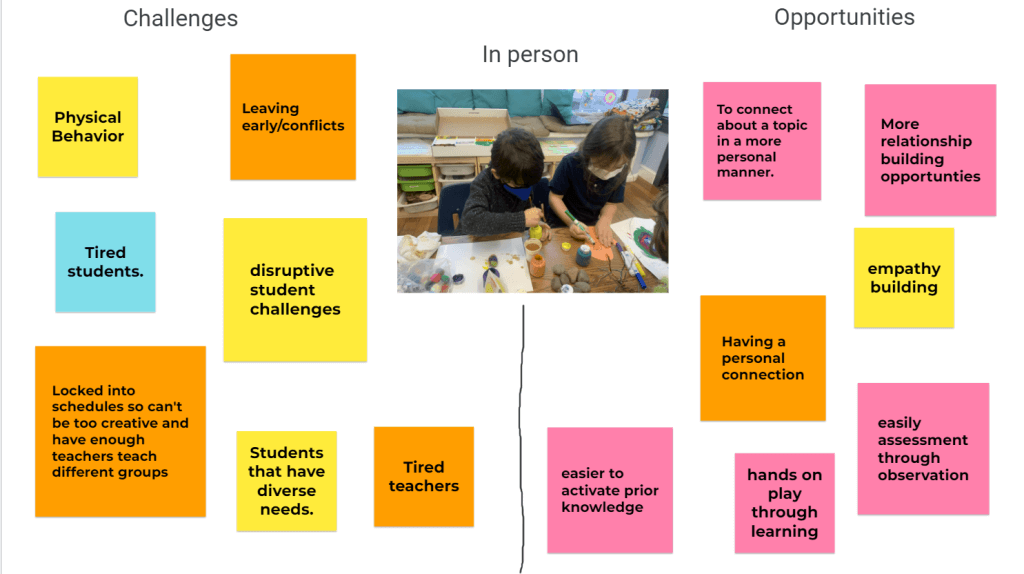
No matter what the learning environment looks like, we posit that it’s always possible to bring Jewish Placemaking to the table. Here’s how:
- Teachers bring nonviolent communication to their classes which allows learners to experience more agency and build toward self-efficacy.
- Teachers bring opportunities for co-creating space with their learners, who in turn experience and practice the process of placemaking.
- Teachers bring Jewish wisdom through text which gives learners opportunities for meaning-making and application.
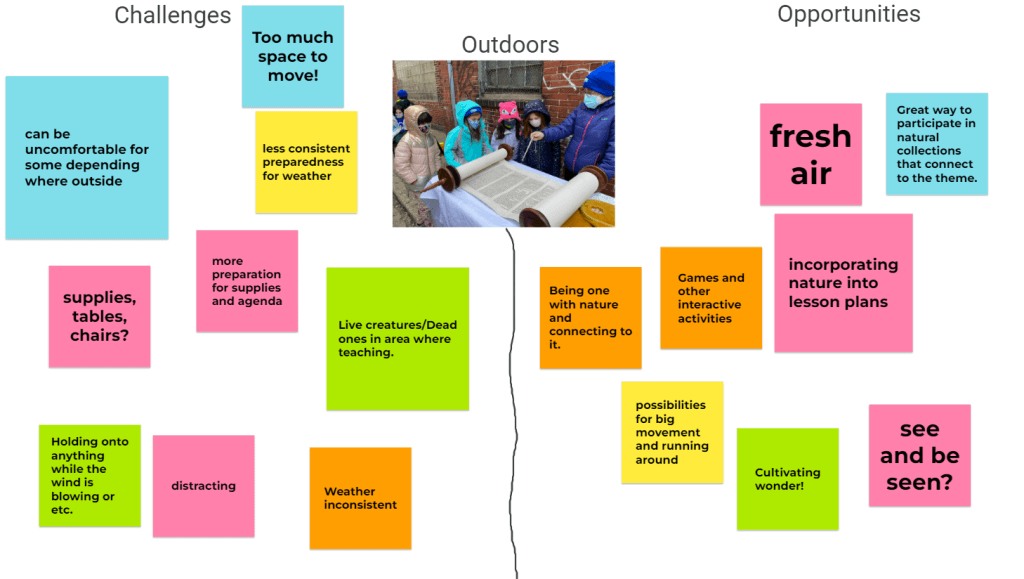
Participants shared some examples of these principles in practice in their classrooms and schools. One teacher shared how she has cultivated a mutual sense of trust between herself and her students. They know that they can ask for accommodations, adjustments, etc., and that she’ll hear them out and work with them to meet their needs. Another teacher shared a similar example. The kids in her class know that they have the flexibility to position their bodies in whatever way they find comfy so long as everyone is safe and the learning can continue.
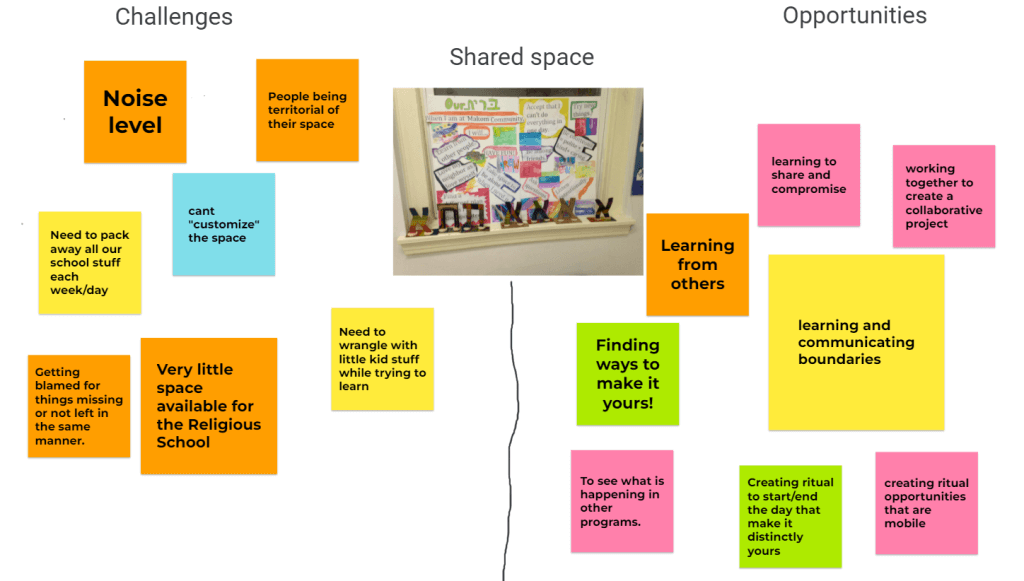
A director explained a project she started in September where every person in her entire school got a pomegranate cutout to decorate with a wish for the new year. There were unfortunately some logistical challenges with getting all the pomegranates strung up and decorating the entryway to the building. Together, we discussed some possible placemaking next steps for the project to take in the future, like a school wide entry ritual. Everyone could pause on their way into the building, choose one wish to focus on, imagine moving into the space and time of those wishes, and reflect on what that was like and how it changed their experience of the day.
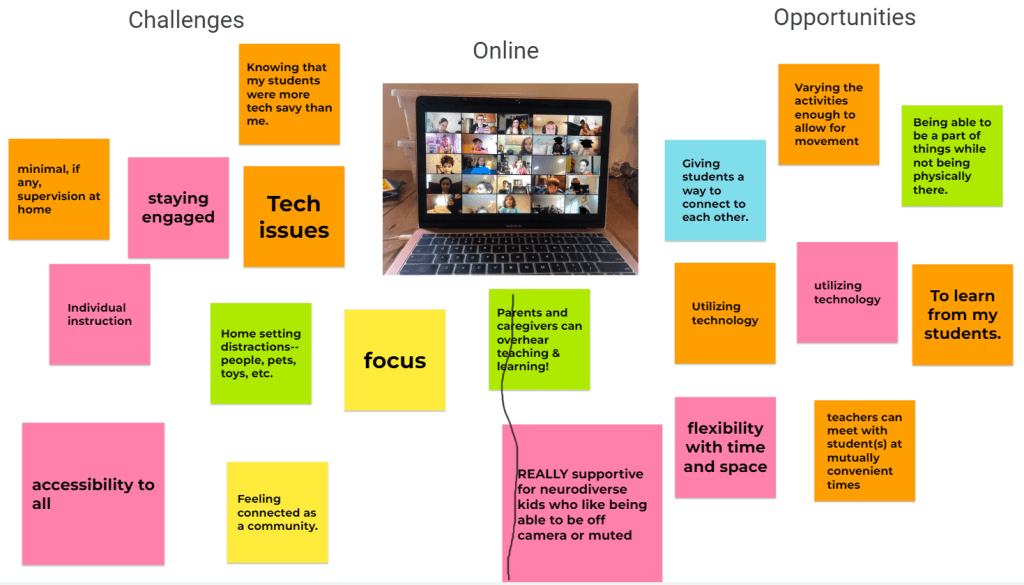
After imagining some ways these principles are at play in our classrooms already, we asked participants to create lesson plans together in small groups for different learning environments. One group worked on a lesson for a group of kindergarteners and first graders meeting indoors; another made a plan for a group of kindergarteners and a group of 4th graders that had to share one classroom at the same time. Separately, directors brainstormed ways to help their teachers with their specific learning environment challenges. Participants left the seminar looking forward to individual coaching sessions in which they will use Jewish Placemaking to continue tackling the challenges of their classroom spaces.
